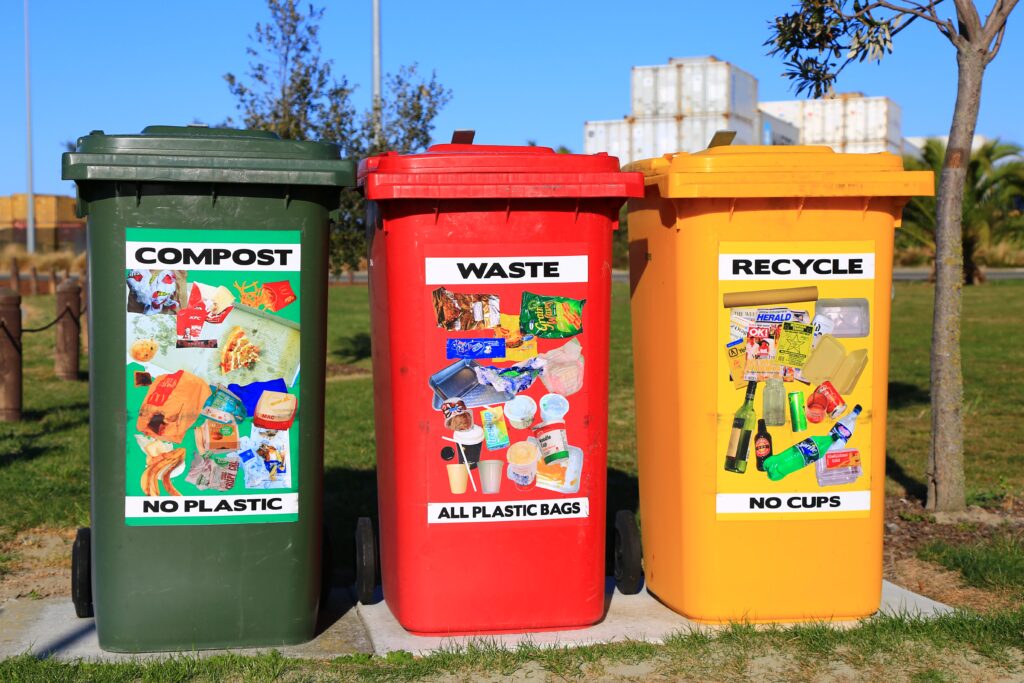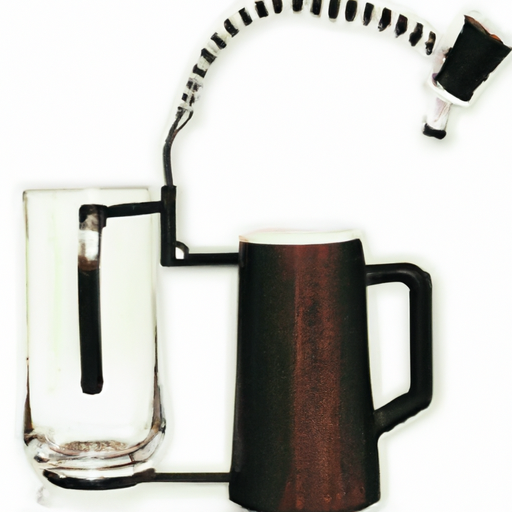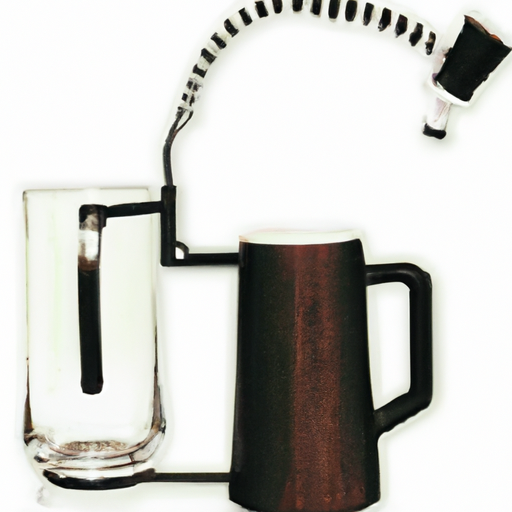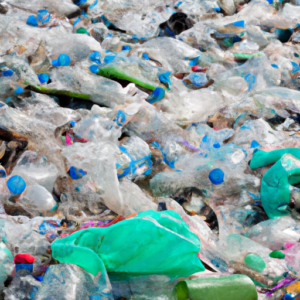Are you curious about the question, “What is the difference between upcycling and recycling?” Well, wonder no more! In this article, we will explore the distinctions between these two environmentally friendly practices. While recycling involves converting waste materials into new products, upcycling takes things a step further by creating something of higher quality or value from discarded items. Sit back, relax, and let’s embark on a journey to uncover the fascinating disparities between upcycling and recycling.

Check Out Our Top Eco Friendly Product Picks On Amazon Here
Definition of Upcycling
Using waste materials to create new products
Upcycling refers to the creative process of taking waste materials or discarded items and transforming them into new products of higher value or usefulness. Instead of simply disposing of these materials, upcycling allows them to be repurposed and given a new lease on life. This process involves using various techniques and methods to reimagine and redesign the materials, ultimately resulting in unique and innovative creations. The primary goal of upcycling is to give new value and purpose to items that would otherwise be thrown away.
Adding value to discarded items
One of the key aspects of upcycling is adding value to discarded items. Instead of seeing these materials as useless or worthless, upcycling recognizes their hidden potential and finds ways to enhance their value. By combining creativity and innovation, upcycling transforms discarded items into something that holds more worth and utility. This not only reduces waste but also promotes a sustainable mindset by utilizing existing resources in a productive and meaningful way. Upcycling offers an opportunity to repurpose and breathe new life into items that might have otherwise ended up in landfills.
Definition of Recycling
Converting waste materials into new products
Recycling, on the other hand, involves the process of converting waste materials into entirely new products. It typically involves breaking down the materials and extracting their raw components to create something different. Unlike upcycling, which aims to preserve the original form or characteristics of the discarded items, recycling focuses on extracting valuable materials to make new products. This process often requires specialized machinery and technologies to sort, process, and transform the waste materials into usable raw materials for manufacturing purposes.
Breaking down materials to create new raw materials
In recycling, the waste materials are collected and sorted based on their composition and characteristics. Items made from paper, cardboard, glass, plastic, metal, and electronic waste, among others, are commonly recycled materials. Once sorted, these materials undergo further processing, which may involve shredding, melting, or chemical treatments to break them down into raw materials with specific properties. These raw materials are then used to manufacture a variety of new products, reducing the demand for virgin materials and conserving natural resources.
Process of Upcycling
Collecting and sorting waste materials
The first step in the upcycling process is the collection and sorting of waste materials. This may involve sourcing discarded items from various places, such as thrift stores, garage sales, or even dumpsters. It’s essential to select materials that are suitable for upcycling and can be transformed into something new and valuable. Sorting the collected materials helps to identify the possibilities and potential of each item, allowing for more precise and targeted upcycling projects.
Reimagining and designing new products
Once the waste materials have been collected and sorted, the upcycling process moves on to the creative stage. This involves reimagining and designing new products that can be crafted from the available materials. The upcycler must envision how these items can be transformed and combined to create something unique and functional. It requires a combination of creativity, innovation, and problem-solving skills to effectively repurpose the waste materials into attractive and practical creations.
Transforming waste into usable items
The final step in the upcycling process is the actual transformation of waste materials into usable items. This can involve various techniques, such as cutting, stitching, painting, or assembling the materials in different ways. The aim is to breathe new life into these discarded items, giving them a fresh purpose and value. Whether it’s turning old glass bottles into stylish vases, repurposing clothing into trendy accessories, or creating furniture from reclaimed wood, upcycling showcases the potential for waste materials to be transformed into beautiful and functional objects.
Process of Recycling
Collecting and sorting recyclable materials
The first step in the recycling process is the collection and sorting of recyclable materials. This involves setting up designated collection points or recycling centers where individuals can deposit their waste materials for recycling. The collected materials are then sorted based on their composition, such as separating glass from paper or plastic from metal. This step ensures that each material can be processed and handled appropriately in the recycling facility.
Processing and separating materials
Once the recyclable materials have been collected and sorted, they undergo processing and separation. This typically involves various techniques such as shredding, grinding, or melting to break down the materials into smaller pieces or reconstitute them into a usable form. Separation techniques, such as magnets or flotation tanks, may also be employed to separate different types of materials based on their properties. The goal is to prepare the materials for further processing or transformation into new products.
Creating new products or raw materials
The final step in the recycling process is creating new products or raw materials from the processed waste materials. The broken down materials can be utilized as raw materials in manufacturing processes to produce a wide range of new products. For example, recycled paper and cardboard can be used to make new paper products, while recycled plastic can be transformed into new plastic items. This circular approach reduces the reliance on virgin materials and helps conserve resources while minimizing waste and its associated environmental impact.

Focus of Upcycling
Creativity and innovation
The primary focus of upcycling is on creativity and innovation. Upcyclers use their imagination and skills to think outside the box and find new uses for discarded items. The process encourages the exploration of unconventional materials and techniques to transform waste into unique and aesthetically pleasing creations. Upcycling allows individuals to express their creativity while promoting sustainability and reducing waste.
Design and aesthetics
Alongside creativity, upcycling places a strong emphasis on design and aesthetics. Upcyclers aim to create products that are not only functional but also visually appealing. This involves considering the form, color, texture, and overall design of the transformed materials. By incorporating artistic elements and paying attention to detail, upcycled products can become statement pieces, showcasing the beauty and potential of waste materials in a way that inspires others.
Focus of Recycling
Sustainability and resource conservation
The primary focus of recycling is on sustainability and resource conservation. By diverting waste from landfills and extracting valuable materials, recycling helps reduce the demand for virgin resources. It conserves natural resources such as timber, water, and minerals, which would otherwise be consumed in the production of new materials. Recycling promotes the efficient and responsible use of resources, contributing to a more sustainable future.
Waste management and reduction
Another significant focus of recycling is waste management and reduction. By recycling materials, less waste is sent to landfills, thereby minimizing the negative environmental impact of waste disposal. It helps prevent pollution, reduces the production of greenhouse gases, and conserves valuable landfill space. Recycling also plays a crucial role in managing waste effectively and ensuring that it is dealt with in a responsible and sustainable manner.

Types of Materials in Upcycling
Discarded products and materials
Upcycling can involve a wide range of discarded products and materials. This can include old clothing, furniture, glass bottles, tin cans, wooden pallets, vehicle parts, and even industrial waste. The upcycling potential of these materials depends on their characteristics and the creativity of the upcycler. Discarded products and materials offer an opportunity for upcyclers to showcase their skills and creativity by turning unwanted items into something new and valuable.
Unwanted or obsolete items
Unwanted or obsolete items often form the basis for upcycling projects. These can include outdated electronics, broken household appliances, worn-out accessories, or even vintage items that are no longer in use. Upcycling these items gives them a fresh purpose or adds value to them, preventing them from being disposed of in landfills. Through thoughtful and innovative upcycling, these unwanted or obsolete items can be transformed into unique and attractive creations.
Waste materials from various sources
Upcycling also involves using waste materials from various sources. This can include materials sourced from construction sites, manufacturing processes, or agricultural activities. By repurposing these waste materials, upcyclers not only reduce waste but also showcase the potential for reusing resources that might have otherwise been discarded without consideration. The variety of waste materials available for upcycling allows for a diverse range of creative possibilities and enables upcyclers to explore unconventional materials and techniques.
Types of Materials in Recycling
Paper and cardboard
Paper and cardboard are commonly recycled materials. These materials can be collected from various sources, such as office waste, newspapers, magazines, or cardboard packaging. Once collected, the paper and cardboard are processed to remove inks, coatings, and contaminants. The fibers are then pulped, cleaned, and reconstituted into new paper or cardboard products. Recycling paper and cardboard helps preserve forests, save energy, and reduce water consumption associated with the production of virgin paper products.
Glass
Glass recycling involves the collection and processing of discarded glass items, such as bottles, jars, and windows. The collected glass is sorted by color, melted, and refined to remove impurities. The molten glass is then molded into new glass containers or transformed into other glass products. Recycling glass not only conserves natural resources but also reduces energy consumption during the manufacturing process.
Plastic
Plastic recycling is crucial due to the significant environmental impact of plastic waste. The collected plastic materials are sorted based on their resin type, as different types of plastics have different properties and recycling techniques. The sorted plastics undergo processes such as shredding, washing, melting, and pelletizing to transform them into new plastic products or raw materials. Recycling plastic helps reduce the demand for virgin plastic and prevents plastic pollution in oceans and landfills.
Metal
Metal recycling involves the collection and processing of various types of metals, including steel, aluminum, copper, and brass. Scrap metal is collected from a range of sources, such as construction sites, manufacturing facilities, or discarded household items. After sorting, the metals are processed to remove contaminants and prepared for melting. Melting and refining the metals allow for the creation of new metal products or the utilization of the recycled metal as raw material in manufacturing processes. Metal recycling saves energy, reduces greenhouse gas emissions, and conserves valuable natural resources.
Electronic waste
Electronic waste, or e-waste, refers to discarded electronic devices such as computers, smartphones, televisions, and household appliances. E-waste recycling involves collecting and dismantling these devices to extract valuable components and metals. The materials are then processed to remove contaminants and pollutants, facilitating their reuse or recycling. Recycling e-waste not only conserves resources but also prevents hazardous substances from being released into the environment.

Scope of Upcycling
Limited to certain materials and products
Upcycling has a somewhat limited scope compared to recycling. While recycling can be applied to a wide range of materials and products, upcycling is more dependent on the creativity and vision of the upcycler. It requires identifying suitable materials that can be transformed and repurposed effectively. Upcycling often involves items that are still in good condition or have specific characteristics that make them viable for transformation. However, the possibilities for upcycling are vast, and with the right imagination, almost any material can be upcycled.
Emphasis on individual creativity
One notable aspect of upcycling is the emphasis on individual creativity. Upcycling allows individuals to explore their creative side and express themselves through the transformation of waste materials. The upcycler’s unique vision, skills, and approach play a significant role in the outcome of the upcycling project. This individualistic approach contributes to the diversity and innovation within the field of upcycling, as each person’s creativity shines through in their creations.
Benefits of Recycling
Conserves natural resources
Recycling plays a vital role in conserving natural resources. By recycling materials such as paper, glass, plastic, metal, and electronics, the demand for virgin resources is reduced. This helps preserve forests, reduce mining activities, and save energy and water consumption associated with the production of new materials. By efficiently using resources, recycling contributes to the sustainable management of our planet’s finite resources.
Reduces pollution and greenhouse gas emissions
Recycling also helps reduce pollution and greenhouse gas emissions. By diverting waste from landfills, recycling minimizes the release of harmful substances into the environment, such as methane gas and leachate. Moreover, the manufacturing of products using recycled materials often results in lower energy consumption and emissions compared to using virgin materials. By choosing recycling over traditional manufacturing methods, we can significantly reduce our carbon footprint and contribute to a cleaner and healthier planet.
Saves energy and landfill space
Another significant benefit of recycling is the energy savings it brings. Producing new products from recycled materials generally requires less energy compared to manufacturing using raw materials. For example, recycling aluminum cans consumes around 95% less energy than producing aluminum from bauxite ore. Additionally, recycling reduces the pressure on landfills, which are filling up at an alarming rate. By recycling materials, we can extend the lifespan of landfills, prevent the need for new landfill sites, and protect valuable land from being used for waste disposal.
In conclusion, while both upcycling and recycling contribute to sustainable practices and waste reduction, they differ in their approaches and focuses. Upcycling involves the creative transformation of waste materials into new, valuable items, emphasizing individual creativity and design aesthetics. On the other hand, recycling involves the conversion of waste materials into new products or raw materials, with a primary focus on resource conservation and waste management. Both approaches play a crucial role in promoting a circular economy and reducing the negative environmental impact of waste disposal. By embracing upcycling and recycling, we can all contribute to a more sustainable and greener future.
What is the Difference Between Upcycling and Recycling: Conclusion
As we reach the end of our in-depth exploration into the topic, “What is the Difference Between Upcycling and Recycling,” it becomes clear that while both practices fall under the umbrella of sustainable waste management, they are fundamentally distinct in their approach, impact, and end results. Understanding these differences is not just an academic exercise; it’s a key component in making more responsible choices in our daily lives—choices that have both immediate and long-term implications for our planet’s health.
Recycling is the process of breaking down waste materials to their basic forms and then remanufacturing them into new products. This method plays a critical role in reducing the demand for raw materials, decreasing energy usage, and minimizing the volume of waste that ends up in landfills. However, recycling often requires extensive resources to separate, clean, and process the materials. Moreover, it’s important to note that not all materials can be recycled indefinitely; many undergo degradation in quality over repeated cycles.
Upcycling, on the other hand, offers a creative twist to sustainability. It involves repurposing or transforming products or waste materials into something of equal or greater value without breaking them down into their raw forms. The beauty of upcycling lies in its capacity for creativity and innovation. By reimagining the potential of discarded items, we’re not just diverting waste from landfills but also reducing the need for new resources and energy that would otherwise be expended in creating something entirely new.
What sets upcycling apart from recycling is also its emphasis on value addition and artistic ingenuity. It turns waste into ‘wants,’ giving materials a second life that is often more valuable than their original form. This aspect makes upcycling not just a sustainable practice, but also an emotionally engaging one. People become attached to their upcycled items, treasuring them for the stories they tell or the craftsmanship they display, which in turn promotes a culture of longevity and responsible consumption.
Both upcycling and recycling contribute to the broader goals of circular economy models, which aim to design out waste and pollution, keep products and materials in use, and regenerate natural systems. However, the key difference between upcycling and recycling hinges on the methodology and the philosophical ethos underpinning each. While recycling is often driven by industrial processes and technologies, upcycling is more likely to be fueled by individual creativity and community engagement.
So as we ponder the question, “What is the Difference Between Upcycling and Recycling?”, it becomes clear that the answer is complex and multi-layered. Each has its place in the greater scheme of sustainable living and environmental stewardship. The choice between upcycling and recycling is not a zero-sum game; rather, they complement each other, providing a diverse toolkit for combating waste and promoting sustainability. By understanding the unique merits and limitations of each, we empower ourselves to make better, more informed decisions that contribute to a greener, more sustainable future.




